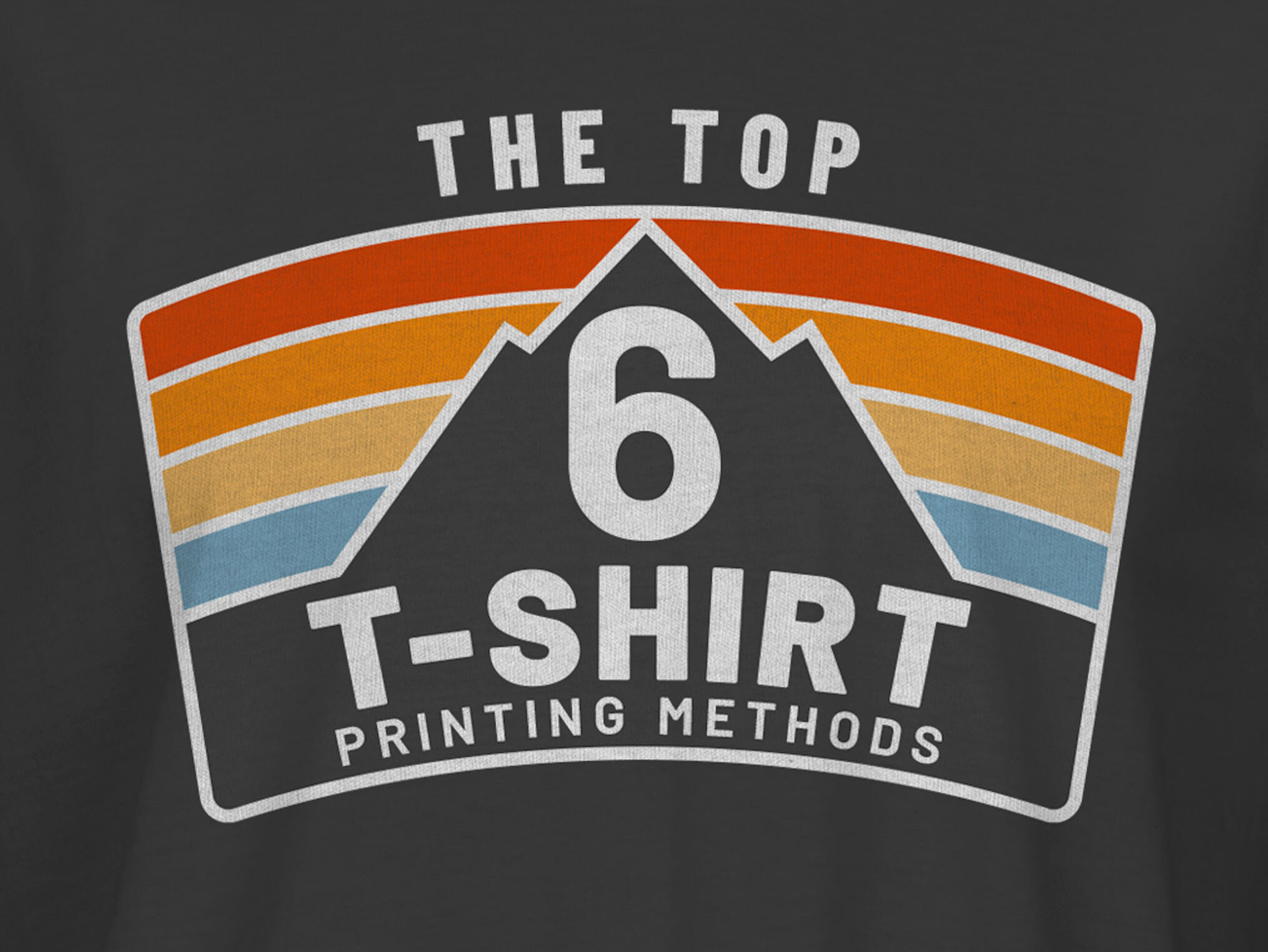1) Screen Printing
Best for: Achieving a high quality print at a low cost per shirt. (Print runs of 50 or more shirts)
Traditional screen printing often results in a much better print than direct to garment (DTG) printing. Softer and less of a "thick ink" feel.
Tips:
Ask your screen printer for a “soft hand” print. This can be achieved with water based ink or plastisol ink.
Use a local screen printer so you can do a “press check” as your shirts are being printed. This will allow you and your screen printer to make last minute adjustments with ink colors and printing quality.
Printing on premium 100% cotton ringspun cotton shirts will result in better prints (softer, better resolution, better colors) than a cheaper “carded cotton” shirt. For premium t-shirts, have a look at Bella Canvas and Next Level.
If your print requires an underbase, ask for a discharge underbase. This will bleach out the dye of the shirt fabric, so bright colors can be printed onto dark fabric. Resulting in a much softer print, compared to a thick white plastisol underbase.
If you can’t find a good local screen printer, have a look at Jakprints.
2) Direct to Garment (DTG) Printing
Best for: Small print runs and Printing on Demand.
Direct to Garment Printing (Inkjet printing onto shirts) is not known for the best quality prints. It’s also not the most cost-effective kind of printing for large print runs.
But it is excellent if you need shirts printed in small quantities. This method is a favorite for drop shippers and business startups. Have a look at Printful and other DTG vendors.
Another advantage with DTG printing is you don’t need to have color separations made for your graphic. A transparent PNG image of your graphic is all your DTG print vendor will need.
Tips:
Send your design to a handful of DTG print vendors, and order one shirt sample from each. This should cost around $30 per shirt. It’s a low investment to locate a good printer.
Printing with no underbase on light fabric will often result in a print that looks and feels better than printing on a dark shirt.
3) Digital Transfers
Best for: Ability to achieve high quality prints in-house with no bulky/messy equipment.
This method allows you to print your graphics onto heat transfer paper with a special laser printer. Have a look at Uninet iColor and Oki.
You can print the transfers one at a time. Then heat press the graphics to shirts as orders arrive.
This looks to be a promising new method for printing high quality t-shirt graphics for small to medium size print runs.
4) Dye Sublimation
Best for: Super soft full-color prints on polyester shirts. Medium size print runs.
Sublimation printing isn’t achieved with ink. It is transferring dye to the polyester fibers in a shirt.
Tips:
Sublimation dye only adheres to polyester, so you can’t use a 100% cotton shirt. However, you can use sublimation on a poly/cotton blend.
The higher percentage of polyester to cotton, the brighter and more saturated your colors will print. (An 80% poly / 20% cotton shirt will print more saturated color than 50% poly / 50% cotton shirt).
Dye sublimation is usually applied to white fabric. You can sublimate onto light colored fabric. But if you try to sublimate on dark fabric, your print won’t show up.
5) Plastisol Heat Transfers
Best for: The ability to apply the graphic to your shirts as the orders come in. Low cost.
This method involves having a vendor screen print your graphic onto sheets of transfer paper. The advantage is you can heat press the graphic in-house as orders arrive. No more committing your shirt inventory to specific graphics.
6) Vinyl Cut Heat Transfers
Best for: Small print runs. Fun with DIY crafts. Low cost.
Vinyl cutting is best for simple designs. You can use an inexpensive Cricut or Silhouette machine to cut your design from sheets of Heat Transfer Vinyl.
The biggest downside to vinyl cutting is the labor-intensive “weeding.” This is removing the excess vinyl after cutting. The more complex your design, the more you will have to manually peel away the unwanted areas of vinyl.

